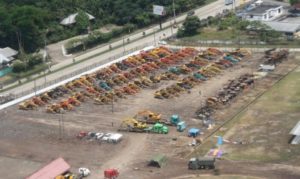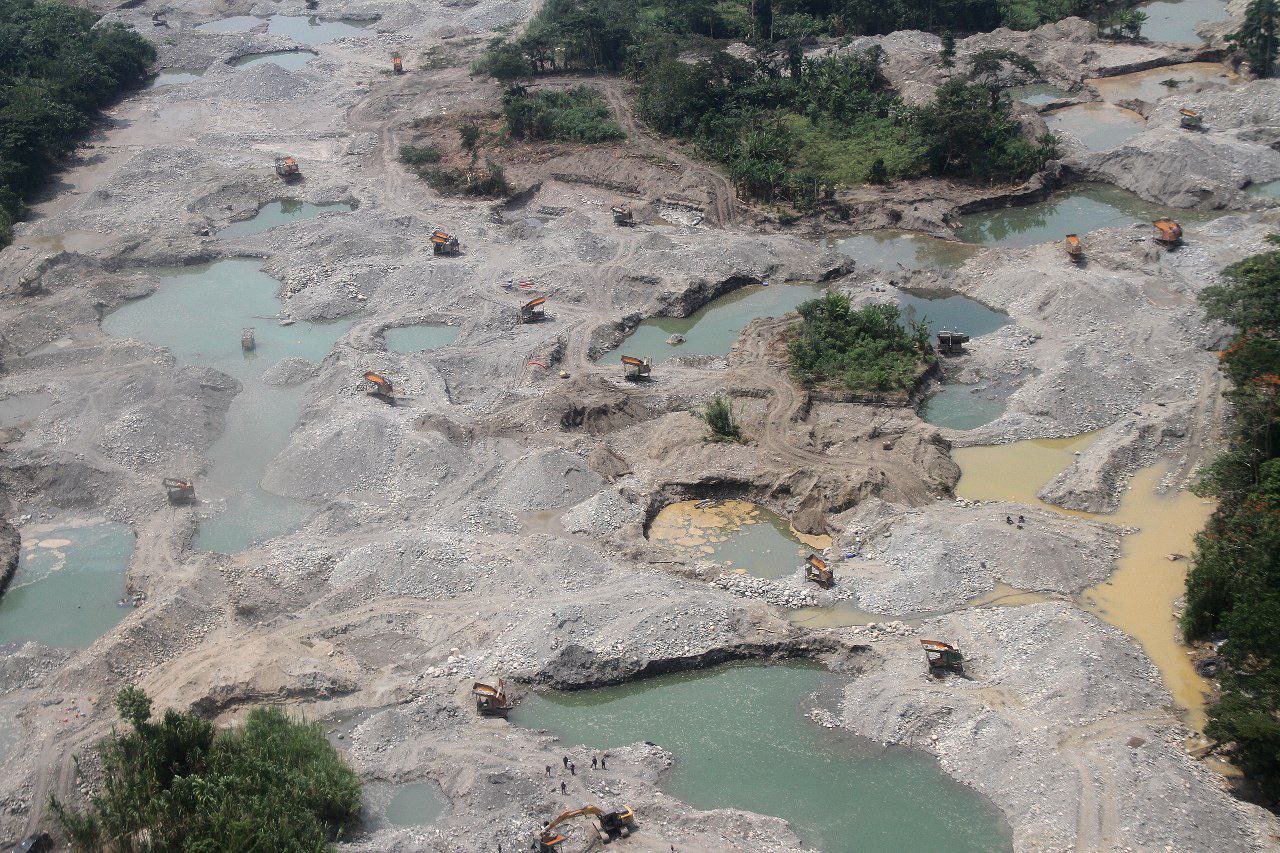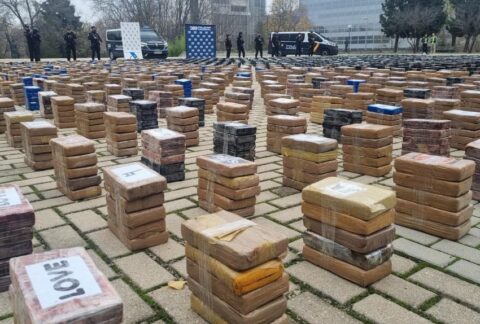Organized crime has diversified its illicit activities in Ecuador into illegal mining, with serious environmental consequences in large parts of the country, contributing to violence and human rights abuses and worsening insecurity. According to Fausto Cobo, director of Ecuador’s Strategic Intelligence Center (CIES), the state faces a new “unconventional” threat that converges with other criminal activities such as narcotrafficking.
Multiple factors facilitated the rise of illegal mining, such as the presence of mineral deposits in remote areas and the existence of illegal mining networks in neighboring Colombia and Peru, the Organization of American States’ Department of Transnational Organized Crime (OAS-DTOC) said in a December 2021 study.
Ecuadorian authorities, however, have not been complacent and have stepped up law enforcement and controls on the gold trade and especially in the fight against illegal mining.
Operation Manatí in Napo

In the early morning of February 13, 2022, more than 1,500 Armed Forces and National Police personnel carried out a mega operation to stop large-scale illegal gold mining in the Yutzupino area of Napo province, in the Ecuadorian Amazon.
During the operation, authorities seized 107 excavators that were transferred to a fairground. The indiscriminate use of large amounts of heavy machinery has caused serious environmental damage in the watersheds of the Yatunyaku and Yutzupino rivers, tributaries of the Napo River, the environmental news site Mongabay reported.
Ecuadorian Minister of Government Alexandra Vela pointed out that a single one of these machines can cost up to $250,000 and compared those who finance illegal mining activities to narcotraffickers. “The national government is not going to allow illicit activities, such as illegal mining developed on the same level as a narcotrafficking enterprise,” she told the press.
According to the OAS-DTOC report, the proximity of criminal groups that engage in illegal mining in neighboring countries increased the availability of illicit financing, as well as the exchange of knowledge and techniques. As a result, access to heavy machinery, explosives, and other equipment is often secured through criminal organizations.
Although Yutzupino is the most affected area in Napo, illegal mining has been recorded in almost all of Ecuador’s provinces with the exception of Galápagos and Sucumbíos.
Operation in Buenos Aires, Imbabura
On July 2, 2019, 2,500 police and military personnel, and 20 prosecutors raided the La Merced parish of the Buenos Aires canton, in the mountainous area of the Imbabura province, to oust illegal mines on site. Makeshift camps in the area were the scene of violent clashes between criminal gangs made up of Colombians, Venezuelans, and Ecuadorians fighting for control of illegal gold and other precious minerals mines.
According to government data, some 10,000 people linked to illegal mining, armed groups intimidating the population, and criminal gangs involved in human trafficking, sexual exploitation, labor exploitation, and other crimes, occupied the area.
Illegal mining in Zaruma
Illegal mining excavation activities in the canton of Zaruma, El Oro province — that date back to the 1950s — resulted in the formation of large sinkholes in several areas. In December 2021, the sinkhole in the town center caused the total collapse of some houses, affecting several families. Authorities evacuated the population as a precautionary measure.
During his visit to the canton, Ecuadorian President Guillermo Lasso declared a state of emergency in order to make a “geophysical diagnosis” and find “definitive solutions.”
“May the inhabitants of Zaruma, El Oro, and all Ecuadorians know the origin of the problem: irresponsible people who carry out illegal mining activities and put their community at risk,” Lasso said via Twitter on January 20, 2022, guaranteeing that the problem would be solved.









